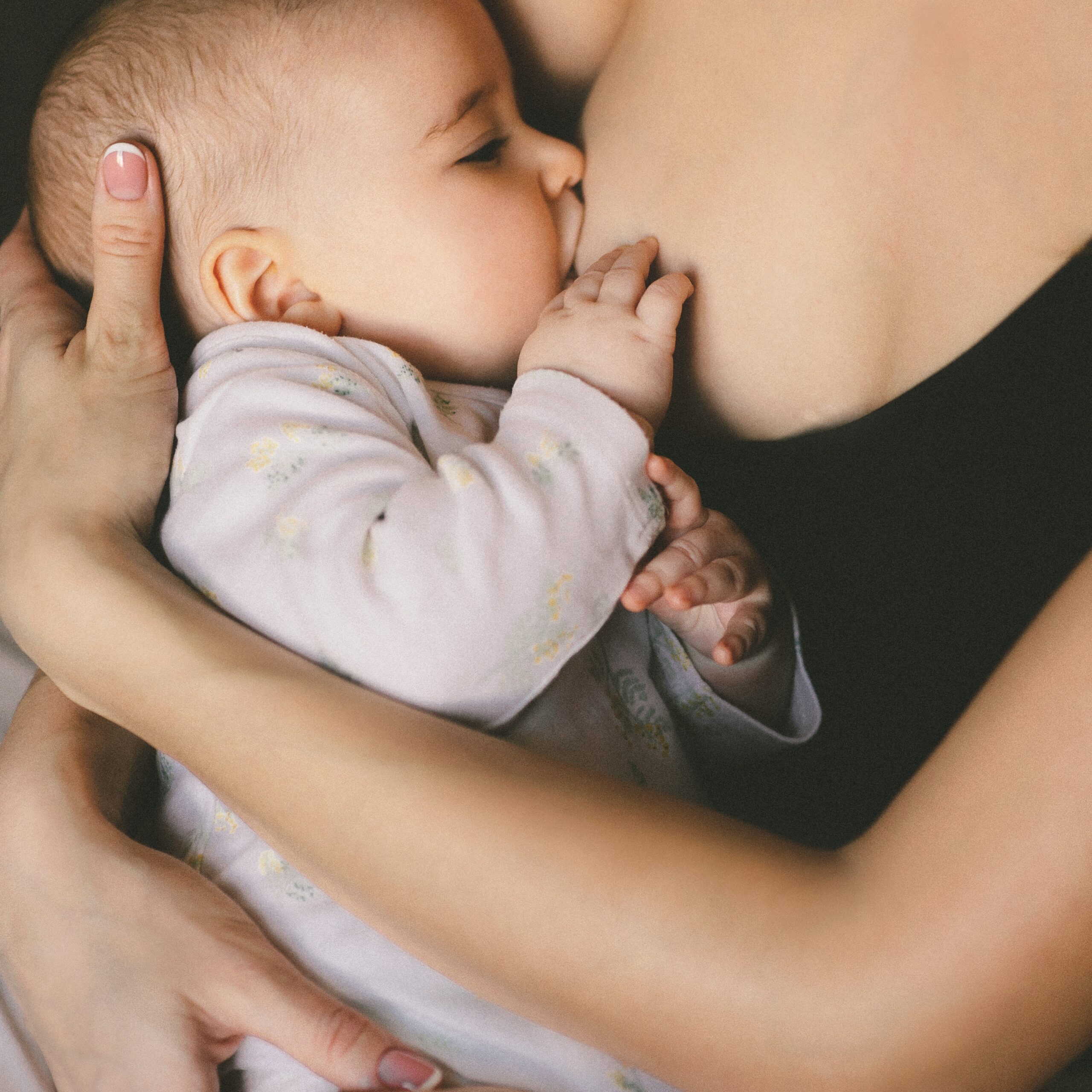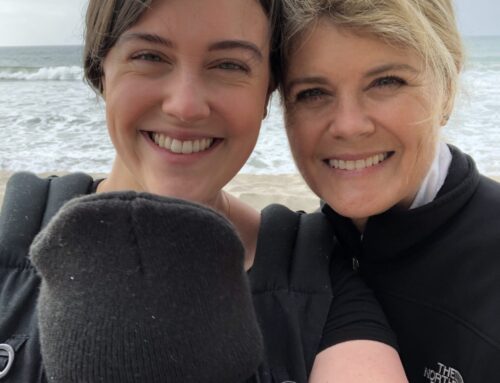My name is Kelsey Smith. I am a wife, mother, Registered Nurse, Lactation Educator, International Board Certified Lactation Consultant and the owner of Love at First Latch. My love for the world of lactation started after my first baby was born in 2015. I saw this world that could be so beautiful and so incredibly frustrating all at the same time and knew I wanted to be a part of it. I got to experience firsthand the lack of support provided to parents in the postpartum period and knew I wanted to be a part of that change. Follow along to find out how our bodies change and prepare to breastfeed, why breastfeeding is so important from a health standpoint for mom and baby and why I continue to do what I do everyday to help parents be heard, feel supported and have access to good lactation care.
Lactation Basics: How our bodies change and prepare to breastfeed
Breasts undergo a lot of changes through pregnancy, lactation and weaning. Most people, including healthcare providers, get zero education on this. During pregnancy breasts grow in size as they start to expand the ductal system, the milk-making infrastructure of the breasts. The areola grows larger and darkens as hormones help to make sure baby can find the breast after birth. Colostrum production starts between gestational weeks 12-16. Colostrum sits in the breasts awaiting the delivery of the placenta. Once the placenta is delivered, there is a cascade of hormones that tell the body it is time to rev up milk volume. Colostrum then turns to transitional milk as it starts to increase in volume and then slowly transitions to mature milk that we all recognize. At the end of breastfeeding, involution of the breast tissue also known as weaning happens about 40 days after the last breastfeed. During this process the milk producing epithelial cells start to involute and decrease. This process can take months to years to complete.
Why breastfeed?
Research on breastfeeding shows that both mom and baby benefit mutually from providing human milk. Breastfeeding has been shown to reduce the mom’s risks of breast cancer, ovarian cancer, type 2 diabetes and high blood pressure. Babies who are breastfed have lower rates of obesity, type 1 and 2 diabetes, food allergies, eczema, asthma and SIDS.
You may have heard the saying “fed is best” and know that those words can silence differing opinions on how best to feed babies. I totally agree that all babies need to be fed no matter what. I also understand that we in the United States are lucky enough to live where we have safe options for feeding our babies. Still human milk is the only milk that is made exactly for what our babies need and is and will always be the gold standard. It contains nutrients that cannot be replicated in formula.
So if a parent wishes to provide breastmilk, then they should have access to health care to support them in that goal because breastfeeding is a skill and learning to breastfeed effectively can take time. In fact, according to the CDC’s 2022 Breastfeeding Report Card, only 24.9% of infants are still exclusively breastfed at 6 months of age after 83.2% of all infants were started off exclusively breastfed at birth. The American Academy of Pediatrics and World Health Organization recommend breastfeeding exclusively for at least 6 months and up to 2 years and beyond as long as both parent and baby mutually agree. Did you know that it is very uncommon for a baby to wean naturally before 1 year of age? When you allow a baby to wean naturally, the typical age of weaning is between 2-4 years old.
We know through research that babies and moms benefit from providing breastmilk well beyond a year, so why does the United States have some of the lowest breastfeeding rates of all the developed countries? The answer to this is multifaceted and involves access to lactation care, equities and disparities in the lactation world, aggressive marketing by formula companies, and, significantly, lack of parental leave in the postpartum period. The United States is the only wealthy country in the world without guaranteed paid parental leave at a national level.
What does breastfeeding have to do with women’s health?
From a health standpoint breastfeeding is an entry point for women to get comfortable and familiar with their breasts. A lot of parents that I see prenatally are uncomfortable touching their breasts and don’t do monthly breast checks. We are taught at a young age the importance of doing monthly breast exams, but many still do not follow the recommendation. If you aren’t checking your breasts monthly, especially if you have dense breast tissue, then you aren’t able to notice differences in your breasts. This can be a huge factor in being able to find potential cancer in early stages.
One of my jobs as a lactation consultant is to teach women how to start feeling comfortable with their breasts. I teach this by educating about things such as hand expression of breastmilk, breast compressions using your hands on your breasts to help drive milk into a sleepy baby’s mouth or hands-on pumping which helps to maximize pumping output. These small actions help women become comfortable not only touching their breasts but also getting to know their breast tissue. This helps to remove the stigma that breasts are for sexualizing when in fact that is not what they were intended for. The purpose of the breast is to provide nutrition for our babies. For a lot of women this is the first time they start to question what they feel in their breasts, what the differences in lactating and non lactating breasts feel like, and when it’s appropriate to talk to your doctor about your findings.
The act of providing human milk to your baby is not only beneficial to the both of you, but it could potentially save your life. Getting to know your body and feel comfortable with it is one of the only ways to know when something isn’t right.
My “Why”
People always ask me if I went into lactation because I love babies, and yes I do, but that wasn’t the main reason. The postpartum period these days takes so much autonomy and decision-making away from the birthing parent, and the thing I love about my job is I get to give that power back and empower parents to know and trust their bodies and to act on their instincts. It really seems so simple, but that knowledge and those skills are difficult to learn in our current healthcare system. Instead we are taught to listen to our providers and not push back; taught to bandaid problems instead of looking for root causes. In my world and in my practice I do the opposite. I sit, listen and make sure each and every person is heard. And that is how you start to change the world–one lactation visit at a time.
“Be the change you wish to see in the world” -Mahatma Gandhi XO,
Kelsey Smith RN, BSN, IBCLC
International Board Certified Lactation Consultant Love at First Latch
loveatfirstlatch.com

Citations:
Center for Disease Control and Prevention 2022 Breastfeeding Report Card https://www.cdc.gov/breastfeeding/data/reportcard.htm
Source: Division of Nutrition, Physical Activity, and Obesity, National Center for Chronic Disease Prevention and Health Promotion
Center for Disease Control and Prevention: Breastfeeding Benefits Both Baby and Mom Content Source: Division of Nutrition, Physical Activity, and Obesity, National Center for Chronic Disease Prevention and Health Promotion https://www.cdc.gov/nccdphp/dnpao/features/breastfeeding-benefits/index.html





Leave A Comment
You must be logged in to post a comment.